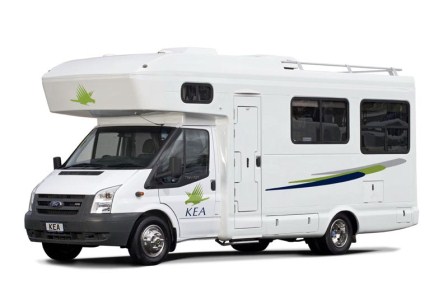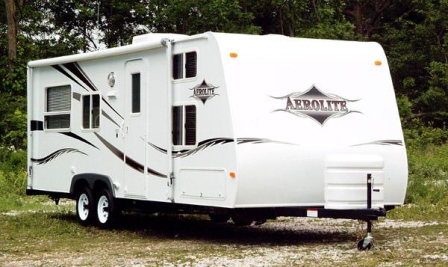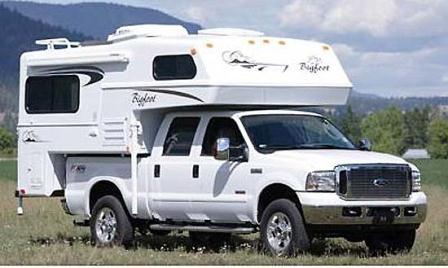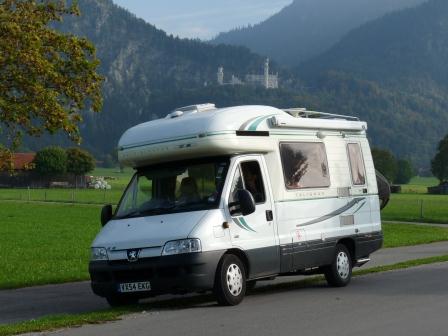Buying an RV is an analyzer’s worst nightmare. There are thousands of new and used RV models to choose from in North America. Only a few of these are great. Some are downright dangerous. Some key decisions that need to be made are:
Type – Should we get a motorized RV (a motorhome), a towable RV (e.g. travel trailer or 5th wheel), or a truck camper?



Each type has pros and cons. We decided that a motorhome would be best for our intended style of travel. They work well for both wilderness and urban camping, whether staying in a campground or free camping. The S&M Motel that we used in Europe as part of the ‘Great Trans-Atlantic Camper Van Swap is a motorhome.

Intended Use — Very few RVs are suitable for heavy usage. Most are designed for vacationers who use them less than 4 weeks a year. These aren’t built to last or to stand up to daily use by full-timers or snow-birds. The few that are are usually very expensive.
New or Used – We intended to purchase a used RV. New RV’s typically depreciate about 30% in the first 3 years. Like used gym equipment, it’s possible to find lightly used RVs at a significant discount. In addition to the new car smell, new RVs typically come with a lot of small issues that need to be addressed. A properly maintained used RV should have had all the bugs worked out, but careful research and inspection are required to avoid buying someone else’s problems. Between our intended travels in 2013 and those of our friends Sue and Martin in 2014, we expect to put on between 50,000 and 80,000 kilometers over the next 2 years. This is much more mileage than most RVs receive (typical usage is 6,000 km per year), so it’s essential that we buy an RV with very low mileage.
Size – We want the shortest RV that would meet our needs. This makes driving and parking much easier. Although larger units are impressive and tempting, and sometimes not much more costly, they don’t work very well in the city.
We attended a couple of RV shows and researched the major manufacturers online. This helped us to develop a feel for what was available and to identify 38 RV models (yes, 38) that might work for us. We used the reliability, value, and highway control ratings in the RV Ratings Guide from RV Consumer’s Group to narrow down our list a bit, removing those units that were rated as unsafe or of exceedingly poor quality. We next developed our own key criteria list, 11 must-have and high priority features that our RV needed to have:
- Full-time bed – that doesn’t need to be made up to sleep
- Full-time dinette – so we don’t have to set up a table to eat
- 3-burner cooktop – the 2-burner ‘camp stoves’ in some units just won’t do
- Gas oven – a convection microwave just won’t cut it. Very few RVs have gas ovens these days, as apparently most people don’t use them and end up storing things inside them instead.
- A slide – A wall that lides out to create more room inside when parked
- Short cab overhang – for better visibility
- Enclosed shower – so the whole bathroom doesn’t get wet
- Generator – more electricity on demand
- Suitable for cold weather use
- A model that is still manufactured – increases the likelihood of getting parts
- North American service network – dealers across North America that can provide warranty repairs and service the RV
Applying these criteria only narrowed the list down from 38 to about 20, so we added 8 more criteria:
- Fiberglass roof – more durable and easier to maintain
- 1-piece fiberglass nose cap – fewer leaks in the most leak-prone area
- Awning – manual or electric, the bigger the better
- Front seats rotate – allowing them to be used in conjunction with the living area. Very few motorhomes offer this, but some could be upgraded afterwards.
- 2-way refrigerator – operates on propane and 110 Volt electricy. Every unit offered this, but almost none had a 3-way fridge that could also run on 12 Volt electricy.
- Counter space – the more the better
- Double sink – makes doing the dishes easier
- 110 Volt Water Heater – works on propane but can also run on 110 Volt electricity when connected to ‘shore power’ (the RV term for being plugged in to external power)
This brought our list of potential RV models down to a more manageable number of 10, but it was still too many to begin detailed evaluations. Analysis paralysis began to set in…
2 thoughts on “The Search for our RV (Part 1)”